Vintage Antique Wooden Duck Decoy Carved Bluebill Drake Schoenheider circa 1900
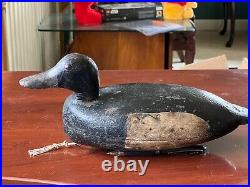
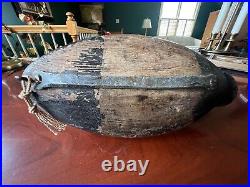
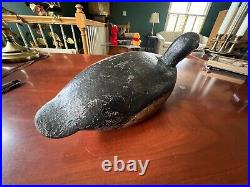
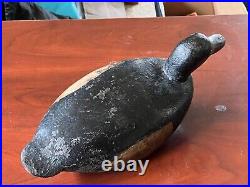
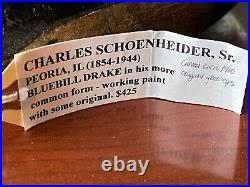
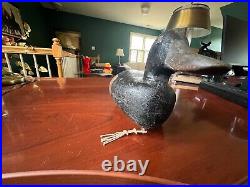
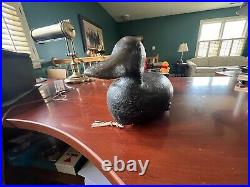
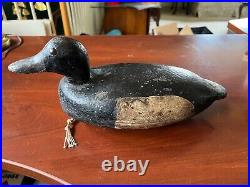
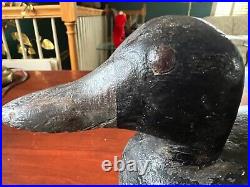
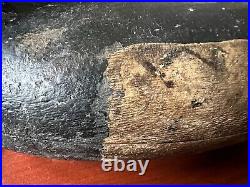

This vintage wooden duck decoy is a true work of art. Hand-carved by Charles Schoenheider, Sr. Circa 1900, this bluebill drake has been crafted from high-quality white pine and features original glass eyes that give it a lifelike appearance. The paint is working and some original, adding to its antique charm. In more common form, this duck type has been a favorite among collectors for generations.
A perfect addition to any vintage hunting or sporting goods collection, this decoy is a true gem from the United States. Don't miss the chance to own a piece of history with this beautifully crafted, vintage Schoenheider bluebill drake. Early carvers used readily available materials and tools, and when sculpting, they relied on their eyes more often than plans or sketches.
Techniques and styles varied from carver to carver and region to region. Some used hatchets to make rough cuts.
Most selected locally available woods, such as pine and cedar. Typically, they fashioned a block of wood, or two thick pieces sandwiched together, into the rough shape of a particular species of duck, then cut a separate piece for the head. Carvers completed finer details with knives and chisels. Painting was the most demanding step and A. Crowell of Cape Cod was one of the finest painters. His decoy feathers are remarkably lifelike. Nineteenth- and early 20th-century carvers intended for their decoys to be used, so they called them. Crowell did carve decorative decoys in his later career. But, it is safe to say, most of these carvers were practical men who wanted to attract ducks or shorebirds and shoot them.Shaw, the former curator at Shelburne, says that when judging decoys, the first thing he looks at is the form. Then he examines the decoy's paint to determine if it is original; he also checks the structural condition of the decoy. The reputation of the carver, the clarity of a decoy's provenance and, to a lesser extent, the stature of former owners also affect value. Duck decoys divide into two primary groups - working and display decoys.
Working decoys subdivide into (1). Skill carver made hunting decoys. Full strings of working ducks. Do not have a keen interest.
